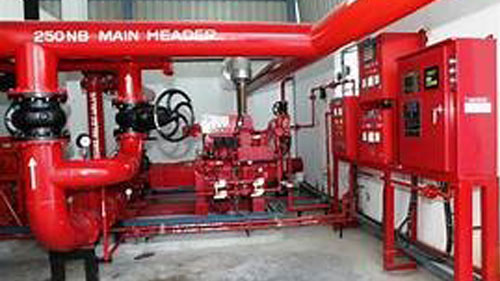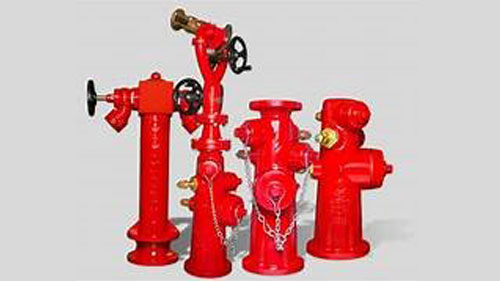Fire Hydrant System
A Fire Hydrant System is an important part of fire protection in buildings and outdoor areas. Its purpose is to provide firefighters with immediate access to water during a fire emergency. You can find Fire Hydrant Systems in buildings, industrial facilities, residential areas, and public spaces to ensure quick access to water for firefighting purposes.
The key components of a Fire Hydrant System include:
Fire Hydrants: Water outlets designed to provide access to the water supply for firefighting. These are usually located on the ground level and are connected to underground water pipelines.
Water Supply: A reliable and sufficient water supply is essential for the fire hydrant system to work. This supply can come from municipal water mains, water tanks, or other sources that can deliver the required flow and pressure.
Water Pump: In buildings or areas where the water pressure is not sufficient, a water pump is used to boost the water pressure in the hydrant system. This ensures an adequate flow of water to fight the fire effectively.
Piping Network: A network of underground pipes connects the fire hydrants to the water supply source. These pipes must be adequately sized and maintained to handle the required flow of water during firefighting operations.
Control Valve: Control valves are installed to regulate the water flow and shut off the water supply when necessary. These valves enable firefighters to control water distribution to specific areas during firefighting operations.
Fire Hoses: Fire hydrant systems are equipped with fire hoses that can be connected to the hydrants to direct water onto the fire. These hoses are typically made of durable materials to withstand high pressures and harsh conditions.
Standpipes: In multi-story buildings, standpipes are vertical pipes with outlets on each floor. Fire hoses can be connected to these standpipes, allowing firefighters to access water at various levels of the building.
Fire Hose Reels: In some settings, fire hose reels are installed in strategic locations. These reels are manually operated and can be used for smaller fires or as a supplement to the hydrant system.
Fire Brigade Connection (FBC): An FBC is an external connection point where the fire department can attach their hoses to the fire hydrant system to augment the water supply from their fire engines.
Firefighting Equipment: Fire hydrant systems are complemented by other firefighting equipment such as fire extinguishers, fire alarms, and sprinkler systems to enhance overall fire safety.
Regular maintenance and testing of the fire hydrant system are crucial to ensure proper functioning during an emergency. Building codes and regulations often dictate the design, installation, and inspection requirements for fire hydrant systems to meet safety standards.
It's important to note that fire hydrant systems vary depending on the specific needs and regulations of the location they serve. Additionally, the maintenance and inspection of these systems should be performed by trained professionals to ensure their reliability and effectiveness in case of a fire incident.


